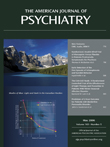The field of psychiatry and the field of medical education have both been undergoing dramatic transformations. Psychiatry has made the transition from a psychoanalytic model to a hypothesis-driven, evidence-based model (the medical model). In addition, rapid advances in the scientific knowledge related to psychiatry are being made, and these advances have substantial implications for clinical care. The field of medical education is also undergoing a dramatic evolution, and outcomes are becoming increasingly competency-based. It is important that psychiatric educators be knowledgeable about the changing landscapes in psychiatry and medical education.
Academic psychiatrists play important roles in the administration of medical student curricula and graduate medical education programs. When an academic psychiatrist accepts a leadership role in medical student or resident education, what can that faculty member do to rapidly get up to speed? First, read the Handbook of Psychiatric Education ; second, work with a knowledgeable administrative coordinator and insist that this individual also read the Handbook of Psychiatric Education ; and third, attend national meetings of the appropriate psychiatric educational organizations.
The initial four chapters in this handbook address medical student education. The following nine chapters deal with residency training. The final chapter by Joel Yager discusses major issues in psychiatric education.
The four chapters dealing with psychiatric training in medical school are superb and address the psychiatric curriculum throughout medical school. The authors integrate information from current educational research with their own experience-derived expertise. They are not afraid to challenge recent educational approaches. For example, they comment that although problem-based learning has advocates who exhibit “almost messianic zeal” (p.13), data do not indicate that this expensive and time-consuming technique is any more effective than traditional approaches.
Directing a residency training program is a complicated and exciting job. The chapters addressing residency training review issues such as administration, accreditation, curriculum development, evaluation, recruitment, technologies, residents as teachers, and special problems. Some chapters include up-to-date reviews of the pertinent literature. Others are written as opinion pieces. All are well done and useful. Paul Mohl’s chapter addressing “special problems and challenges in the residency program” is exceptional. Mohl reviews very difficult issues that every residency director eventually faces, for example, residents with psychiatric illness, pregnancy during residency training, and changes in leadership. Someone who does not find these issues challenging, important, and interesting should think twice about becoming a residency director.
In Joel Yager’s splendid final chapter, he challenges readers to think creatively and reexamine underlying assumptions about the field. As always, Yager is provocative and profound.
The editors attempted to produce a book that would be useful to faculty and administrators who have significant involvement in psychiatric education. They have succeeded magnificently.

